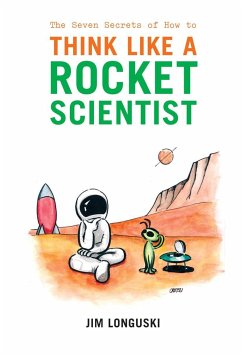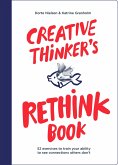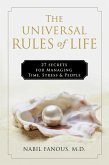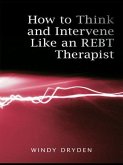This book explains the methods that rocket scientists use - expressed in a way that could be applied in everyday life. It's short and snappy and written by a rocket scientist. It is intended for general "armchair" scientists.
This book translates "thinking like a rocket scientist" into every day thinking so it can be used by anyone. It's short and snappy and written by a rocket scientist. The book illustrates the methods (the 7 secrets) with anecdotes, quotations and biographical sketches of famous scientists, personal stories and insights, and occasionally some space history. The author reveals that rocket science is just common sense applied to the extraordinarily uncommon environment of outer space and that rocket scientists are people, too. It is intended for "armchair" scientists, and for those interested in popular psychology, space history, and science fiction films.
This book translates "thinking like a rocket scientist" into every day thinking so it can be used by anyone. It's short and snappy and written by a rocket scientist. The book illustrates the methods (the 7 secrets) with anecdotes, quotations and biographical sketches of famous scientists, personal stories and insights, and occasionally some space history. The author reveals that rocket science is just common sense applied to the extraordinarily uncommon environment of outer space and that rocket scientists are people, too. It is intended for "armchair" scientists, and for those interested in popular psychology, space history, and science fiction films.
From the reviews: "People of Earth . . . Attention!" Jim Longuski's book takes you on a journey of exploration to that nearly infinite space between the ears and behind the brows of that most mysterious of all creatures - the rocket scientist! Going well beyond the oft-used aphorisms, where no writer has gone before, he shows you how these gifted individuals think, feel, work, play, fantasize, rationalize, laugh and cry. From the glories of their epoch-making achievements to the tragedies of their magnificent failures, it is all here, told with insight, humor, objectivity and personal perspective. Without being preachy, lessons are offered that apply to anyone seeking to make professional or personal life just a little bit more successful and fun. I just couldn't set this book down!Robert Cesarone, Rocket Scientist It's really great!Dr. Buzz Aldrin, Lunar Module Pilot, First Manned Landing on the Moon This book offers helpful career and life advice with a unique twist. Professor Longuski's insights on how to 'think like a rocket scientist' are true gems, mined and polished over many years of experience in the aerospace field as a professor, researcher, and JPL mission designer.Here is a guide that will benefit engineers and nonengineers alike, infused with a sense of humor and relevancy that brings the subject matter to life.Dr. Henry T. Yang, Professor and Chancellor, University of California, Santa Barbara Targeted to a popular audience and written in an informal conversational manner. The author uses his vast experience in the U.S. space program together with his knowledge of 20th century science fiction films and popular literature. The book is easy to read. It traces the successes of the Mercury, Gemini, and Apollo to the ability to really think like rocket scientists. Seven sections comprise the 'seven secrets.' Current problems related to the Space Shuttle and the International Space Station completion are caused by the failure to remember and practice these seven secrets. The book ends on a positive note that with recent changes in NASA the future outlook for returning to the Moon and the exploration of Mars is much brighter.Dr. Peter M. Bainum, Distinguished Professor of Aerospace Engineering, Howard University, Washington, DC Anyone who feels harried and stressed, or overwhelmed by workplace vexation will find this book a perfect way to relax and regain perspective in addition to learning something new and interesting. The simple and sparkling writing style is a perfect compliment to the book's advice on being imaginative, playful, and active. The adorably whimsical illustrations are the perfect accompaniment to and reinforcement of this style. Revisit your childhood passion for astronauts and learn about how to succeed in your adult endeavorsAmazon Customer Review "Learned from the monumental challenges of space exploration, the book describes in ordinary language the methods that rocket scientists used to dream up ideas, figure things out, make decisions, and get stuff done - expressed in a way that you could apply to everyday life. ... Longuski illustrates the methods rocket scientists use with anecdotes, quotations, and biographical sketches of famous scientists, ideas from sci-fi, personal stories and insights, and occasionally a bit of space history." (www.YoursDaily.com, December, 2006) "If I had been able to read this book much earlier I might have avoided some of my own difficult ... experiences. This book will become required reading for all my space-science project students. I recommend it to all aspiring rocket scientists, current rocket scientists who feel the need too reinvigorate their working practices, and, indeed, to anyone who wishes to develop a new way of thinking ... like a rocket scientist!" (Martin Barstow, The Observatory, Vol. 127 (1200), October, 2007) "Longuski's brief, chatty essay describes even aspects of sound thinking, labeled dreaming, judging, asking, checking, simplifying, optimizing, and doing. ... The book is really a running conversation with a good storyteller ... . it should be an enjoyable read. Summing Up: Recommended. General readers." (D. Bantz, CHOICE, Vol. 44 (11), July, 2007)








